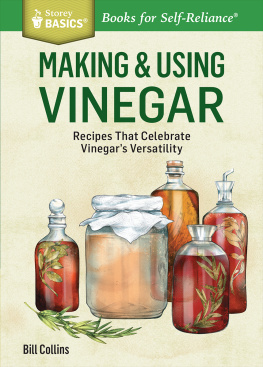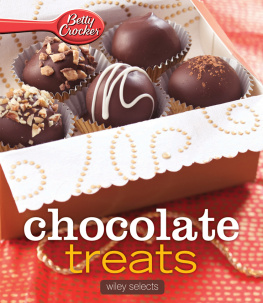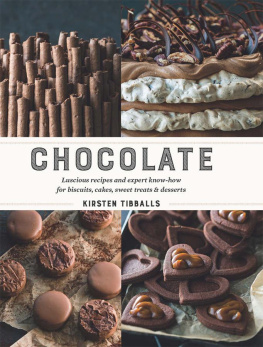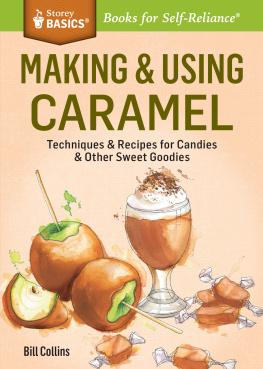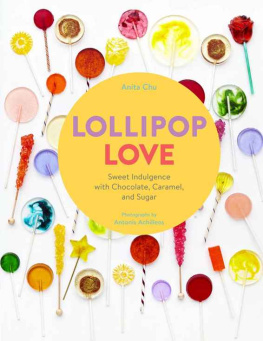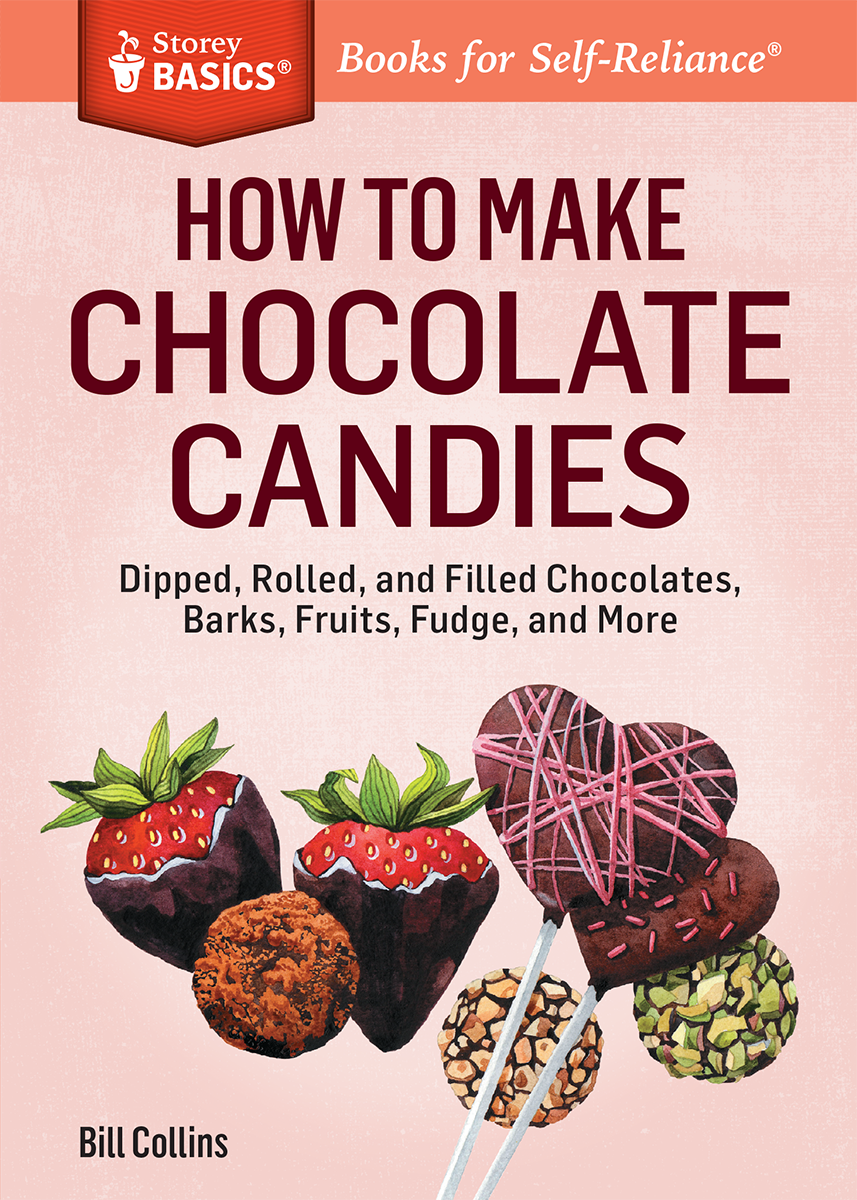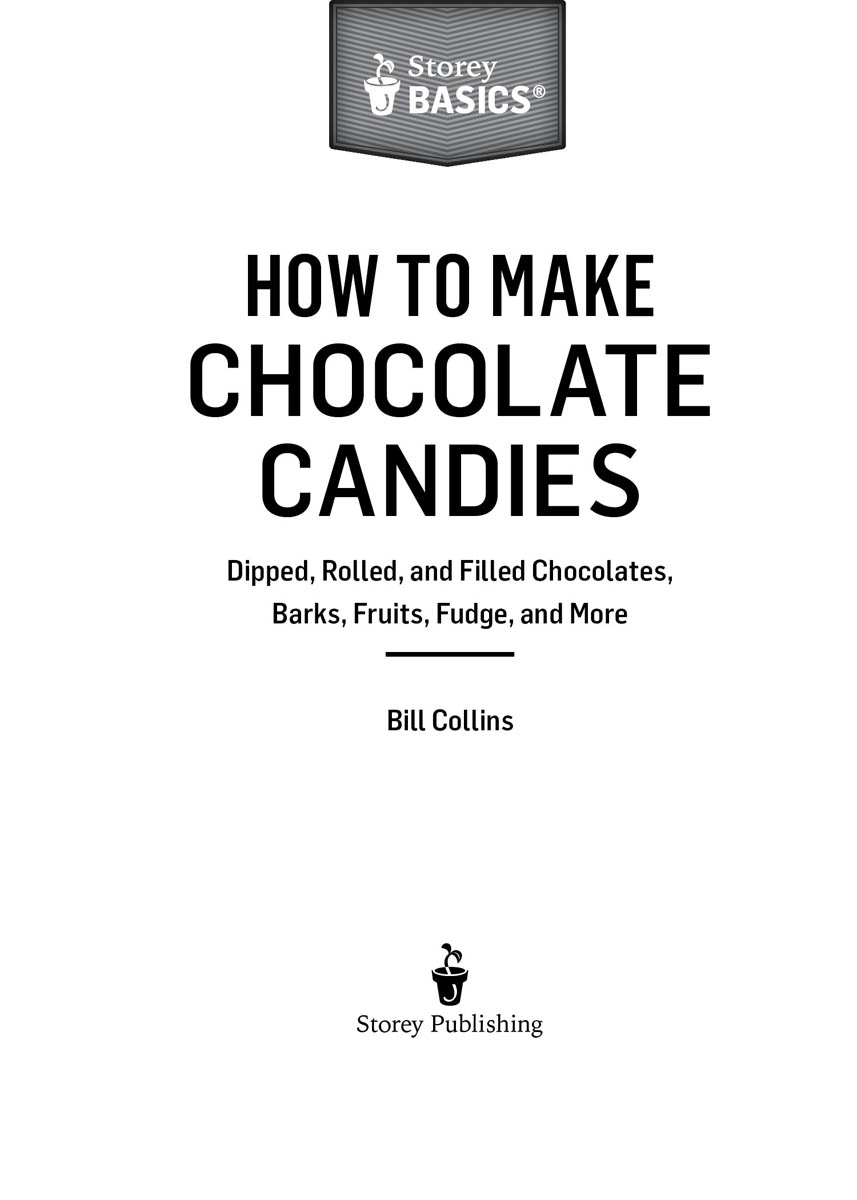Contents
To my mom, Carol Collins, who always chooses chocolate over any other food, every time. And to her sisters Jean and Betty, who chose the same way, too.
You dont really make chocolate candy just to eat it. You make it to give away as a gift.
Ben Strohecker, Founder, Harbor Sweets
Chapter one
Introduction to Chocolate
Chocolate is something that transcends being just another food item. Yes, it tastes great, feels wonderful on the tongue, and often makes us involuntarily say aaaah after each bite. Other foods may make us do that, too, but theres nothing else that we give and receive that signifies love like chocolate. What other foods make such great gifts? Which ones have us set our mental alarm clocks to have a morsel each day? And which other edibles do we grab when we feel sad, and devour when we feel great? It always comes back to chocolate.
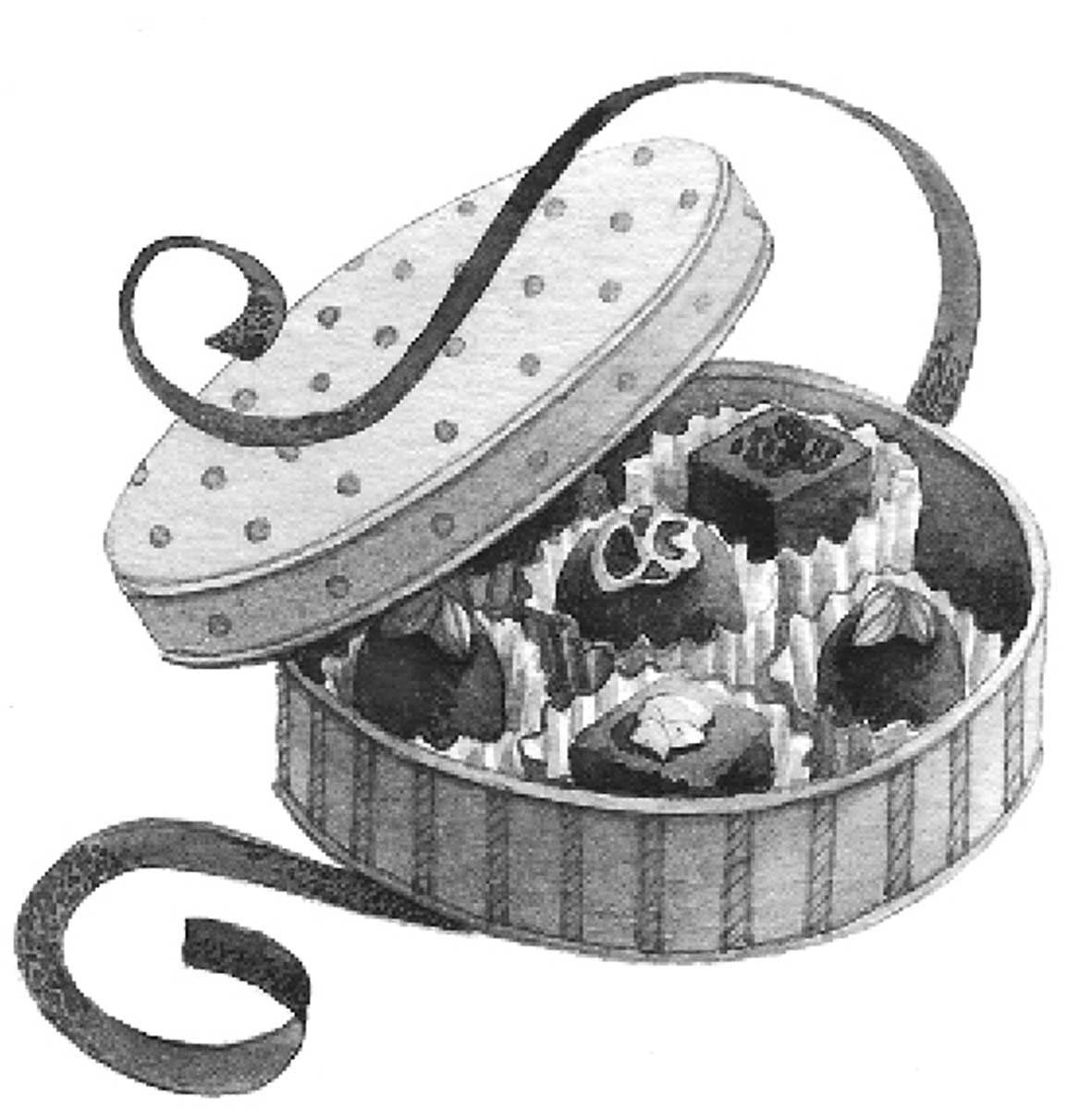
Although you can buy many outstanding and expensive chocolates, none will ever be as amazing as the ones that you make yourself. Your homemade chocolate candy will get a response that no store-bought confection can ever bring: You made that for me? I cant wait to try it! In this book youll learn how to elicit that response with homemade chocolate fudge and bark, a variety of molded candies, three styles of truffles, and chocolate-covered nuts, potato chips, and more!
Giving homemade chocolate candy is very special. And making a confection that is every bit as wonderful as your gesture can be very simple. But you do have to follow a few rules to get a great result. Theres an old saying that I made up: Making chocolate candy is simple. Messing it up is even simpler. The basic idea behind this is that chocolate is very sensitive to temperature, and you must keep it within a certain temperature range after you melt it. If you do, your chocolate will have a glossy look and a snappy texture. If you dont, then it will have a dull finish and a mushy consistency. Other ways your candy making can go astray include trying to speed up the melting process, using the wrong kind of chocolate, or skipping a step that may seem unnecessary. But if you do follow the simple, time-tested steps, then youll soon be giving your friends and family chocolate candy thats both beautiful and delicious.
Well get into all the details in the next chapter, but first, some background on chocolate will help you choose the right type for your candy-making needs.
Types of Chocolate
Heres a brief history of chocolate: the Aztecs discovered it, royalty tried to keep it for themselves, the masses revolted and started to consume it, and here we are today. Everything else is just a detail that can be found online.
But whats important to everyone are the two things that come from the cocoa pod. The cocoa pod? Okay, lets back up, but just for a moment. Cacao trees, which are grown near the equator, produce cocoa pods. First, the pod is harvested by hand, the way its been done forever, and then its cracked open and dried in the sun. The seeds inside the cocoa beans are then ground down. From the beans we get the chocolate liquor, which is not alcohol. From the chocolate liquor comes the cocoa butter, which makes up the fats and great texture, and the cocoa solids, from which we get cocoa powder. These are the primary components of chocolate. From all of this we get all of the types of chocolate that we know and love.
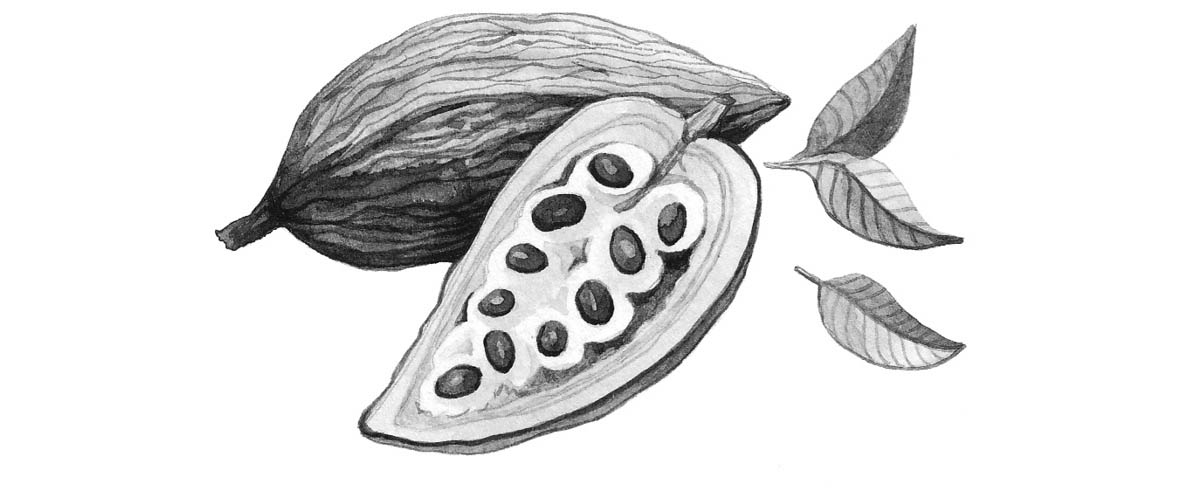
Cocoa pod, open, showing beans inside
Dark chocolate. For many people, dark chocolate is the standard for great taste and elegance. It can range from being a bit sweet to having almost no sweetness at all. The higher the cacao percentage listed on the label, the less sweet the chocolate.
Milk chocolate. Unlike dark chocolate, milk chocolate contains milk or milk solids. Its lighter in color, and it usually has more sugar, which makes it sweeter than dark chocolate.
White chocolate. To some people, this technically isnt even chocolate, as it contains no cocoa powder. It has a different taste and texture from the other chocolates but is still quite popular for many treats and is often used as a decoration and design enhancement for other chocolate candies.
Semisweet and bittersweet chocolate. Usually sold as chocolate chips, this type of chocolate can be used for making fudge and ganache. Semisweet is slightly sweeter than bittersweet, although the sweetness varies from brand to brand. They can usually be used interchangeably.
Unsweetened or bakers chocolate. This type of chocolate contains 100 percent cacao, meaning that it has no sweetness at all. Unsweetened chocolate is almost always used in baking and rarely used in candy making.
Cocoa powder. Unsweetened chocolate in its dry form, cocoa powder is usually used in baking or for hot chocolate. It also has its place in candy making as a popular finishing touch to roll truffles in cocoa powder. The unsweetened powder is a nice counterpoint to the very sweet truffle, as well as having a pleasant mouthfeel.
Couverture. This very high-quality chocolate is used mostly for making molded candies and for coating ganache to make two of the truffle styles. It has more cocoa butter than other chocolates, which gives it a smoother and slightly thinner texture for pouring and molding. This means your candies will have more shine and snap than any other chocolates. It comes in dark, milk, and white chocolate. The name, couverture, is French for cover.
Compound coatings. A number of companies sell chocolate wafers and other products that are made to melt easily and look good, no matter what you do to them. While these usually do contain real chocolate, its best to avoid them because they also contain other ingredients, including oils, to ensure that theyll turn out candies with shine and snap. The problem is that compound coatings do not have the flavor of real chocolate, and that will be evident when you taste your chocolate candies.
What Is Good Chocolate?
At this point, youve decided to make chocolate candy. You might already know what you want to make. How do you decide what kind of chocolate to use?
Recipes, catalogs, and websites often refer to buying, using, and eating good-quality chocolate. The most important thing involved in choosing good-quality chocolate is simply to find one that you like. This is one of the many fun parts of making chocolate candy. You can use one of many high-quality chocolates, including Callebaut, Valrhona, Ghirardelli, Scharffen Berger, L. A. Burdick, Merckens, Trader Joes Belgian, Guittard, and so many others. Any of these will give you terrific results. If you have the time before you make the chocolates, this would be a great opportunity to do a taste test. Or better yet, you can become even more popular with your friends and family by inviting them over for a blind taste-testing party. If they didnt love you before, they certainly will now.
Deciding on a favorite can take years of experimentation, if not a lifetime. Like me, you may find that your favorite changes from year to year or maybe from week to week. Or even from bite to bite. And it might not be just a solid piece of chocolate. It might be an orange-scented truffle or a piece of dark bark with perfectly toasted almonds. Thats the beauty of chocolate. You can love it all.



